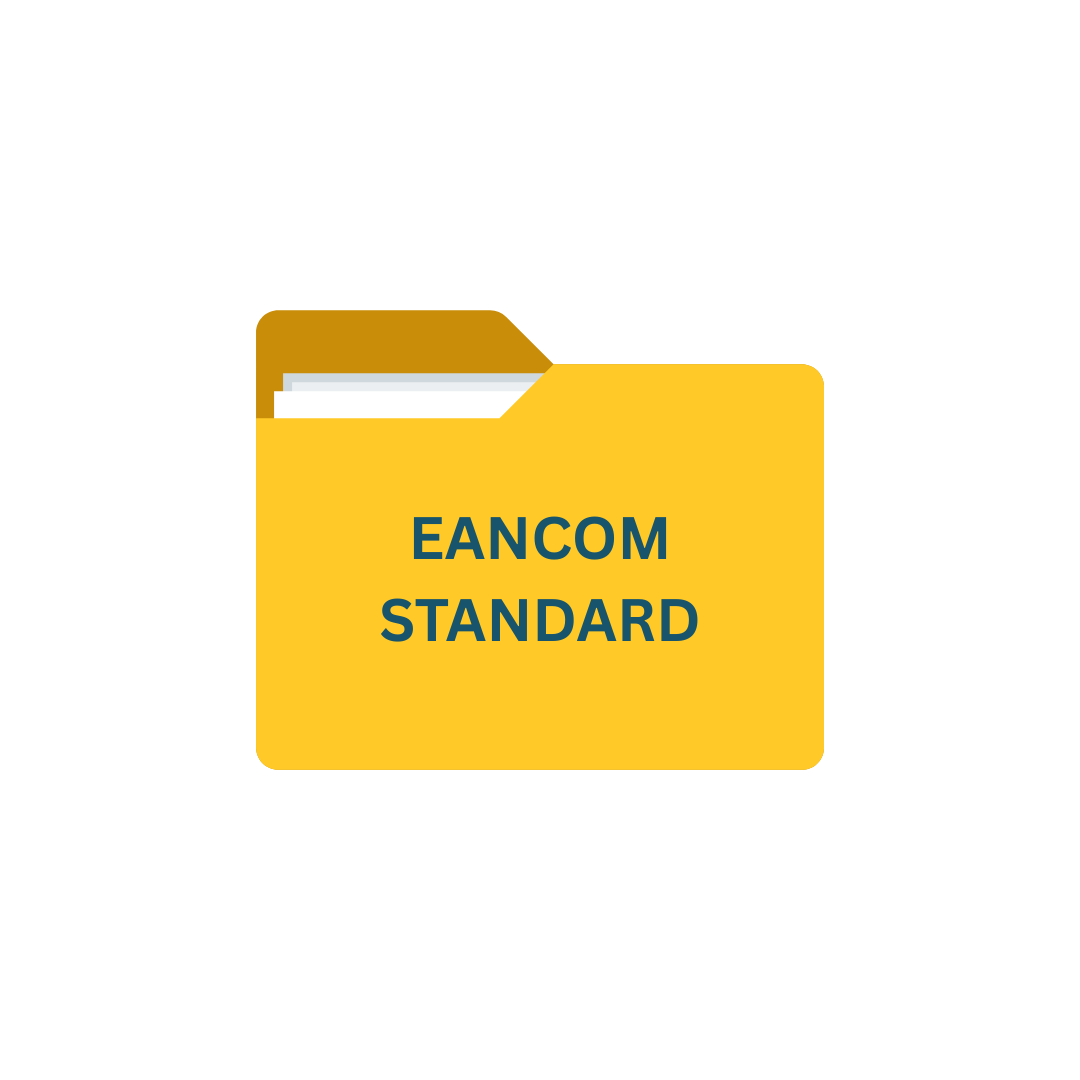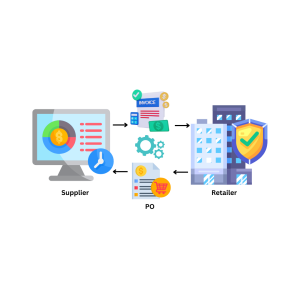Introduction
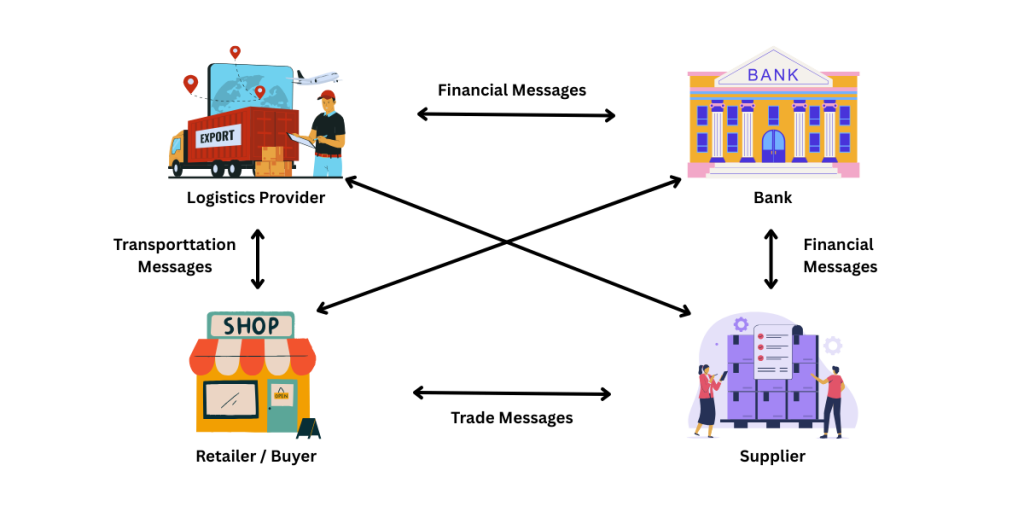
The global EDI market is projected to reach $4.52 billion by 2030, underscoring the crucial role of electronic data exchange in contemporary business operations. Originally developed in 1987, EANCOM has since become one of the most widely adopted EDI standards across the European consumer goods industry.
As a subset of UN/EDIFACT specifications, EANCOM provides comprehensive EDI guidelines for various business processes, including purchase orders, dispatch advice, and invoicing. What makes this EDI data format particularly valuable is its governance by GS1, an international organization spanning more than 80 countries, ensuring consistent support and local language accessibility. Different types of EDI standards exist, but EANCOM stands out with its four distinct message categories: Master Data, Commercial Transactions, Transportation and Logistics, and Report and Planning Messages.
In this comprehensive guide, we will explore everything you need to know about implementing EANCOM standards effectively, from basic concepts to advanced integration techniques. Whether you’re new to EDI specifications or looking to optimize your existing EDI implementation, this article will provide you with practical insights and technical guidance.
Understanding EANCOM EDI Specifications and Structure
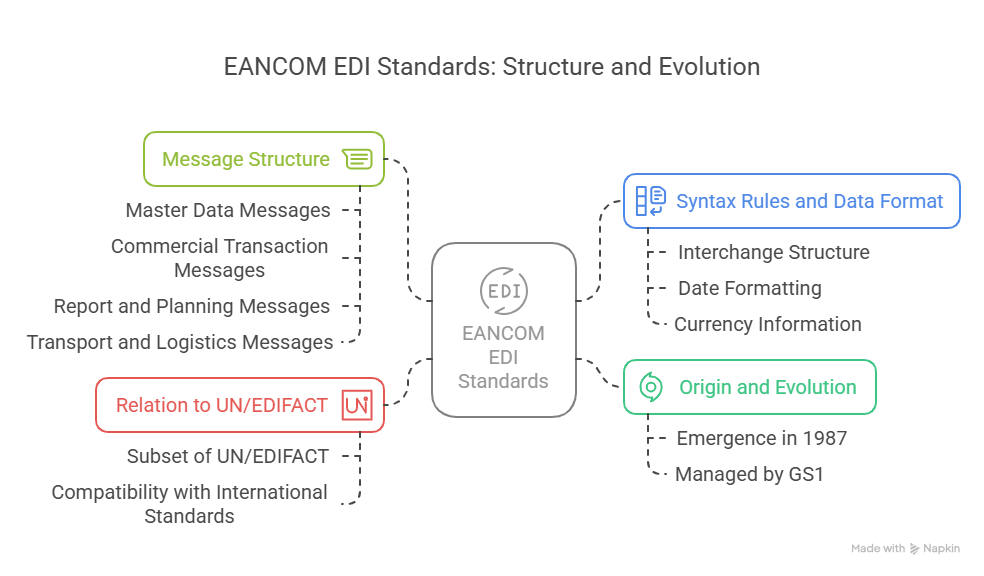
EANCOM standards provide a structured framework for electronic data interchange, bridging the gap between order information and the physical movement of goods. To implement these EDI specifications effectively, a thorough understanding of their structure is essential.
Origin and Evolution of EANCOM Standards
EANCOM emerged in 1987 as a specialized project by the General EAN Assembly to facilitate global data interchange. Although EAN International has been involved in EDI processes since 1972, the growing complexity of communications technology necessitated a more standardized approach. Initially created for retail and consumer goods sectors, EANCOM gradually expanded into the healthcare and construction industries.
The standard underwent significant transitions when GS1 took over its management in 2015, followed by another update in 2016. Currently, EANCOM remains one of the most widely adopted GS1 standards, with approximately 126,000 companies implementing it as of 2020. Each year, billions of EANCOM messages are exchanged worldwide, facilitating efficient and secure business processes.
How EANCOM Relates to UN/EDIFACT
EANCOM functions as a complete subset of the UN/EDIFACT standard (United Nations Electronic Data Interchange for Administration, Commerce and Transport). Unlike the extensive UN/EDIFACT framework, EANCOM includes only essential message elements required for business applications while omitting optional elements not relevant to GS1 users.
All EANCOM 2002 messages are based on UN/EDIFACT directory D.01B, released by UN/CEFACT in 2001. This relationship ensures that EANCOM messages maintain compatibility with broader international EDI standards yet remain streamlined for practical implementation. Through this approach, EANCOM successfully integrates GS1 standards for identifying trade items with logistics units and Global Location Numbers (GLNs).
Key Components of EANCOM Message Structure
The EANCOM message structure consists of four primary categories:
- Master Data Messages – Contain relatively static information such as product measurements, names, and addresses
- Commercial Transaction Messages – Cover the trading cycle from quotation requests to remittance advice
- Report and Planning Messages – Enable trading partners to exchange forecasts and analytics
- Transport and Logistics Messages – Provide information about dispatch, transport, and receipt of goods
Each EANCOM message follows a structured format with Header, Detail, and Summary sections. Within this framework, every product is uniquely identified by a Global Trade Item Number (GTIN), while locations and parties are identified through Global Location Numbers (GLNs). Furthermore, logistics units are tracked via Serial Shipping Container Codes (SSCC), enabling accurate monitoring throughout the supply chain.
EANCOM Syntax Rules and Data Format Requirements
EANCOM employs specific syntax rules to ensure consistent interpretation across systems. The interchange structure begins with service segments that form message envelopes. These include the UNA segment (defining service characters), UNB (indicating interchange beginning), and UNH (marking the start of a specific message).
Date formatting follows the CCYYMMDD convention, where century elements precede year, month, and day. Additionally, EANCOM guidelines discourage the use of free text, reserving it solely for general information that cannot be coded. For item descriptions, EANCOM supports four formats: coded, free form, coded with supplementary free form, and structured.
Currency information is indicated through the CUX segment, while allowances and charges are specified via the ALC segment. When hierarchical relationships exist between products, EANCOM enables parent-child linkages, particularly in Price/Sales Catalogue (PRICAT) and Product Data (PRODAT) messages.
This standardized approach to EDI data formatting ensures that trading partners worldwide can exchange information accurately and efficiently, regardless of their industry or geographic location.
Essential EANCOM Message Types and Their Functions
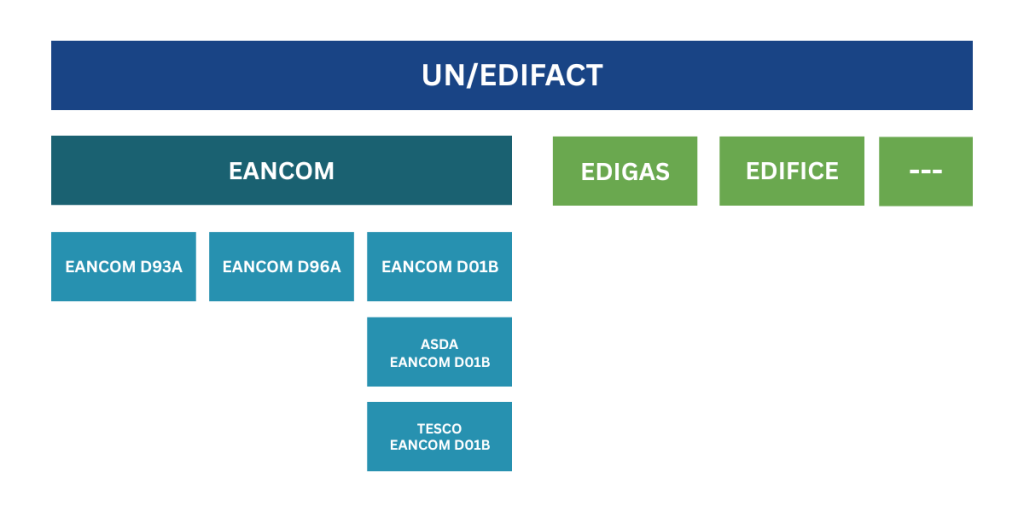
EANCOM message types form the backbone of electronic data communication between trading partners. These standardized formats enable businesses to exchange crucial information throughout the supply chain process. The four primary categories of EANCOM messages serve distinct functions that collectively support the entire trade cycle.
Master Data Messages for Product and Party Information
Master data messages transmit information that remains relatively stable over time. These messages establish the foundation for all subsequent electronic exchanges by sharing core reference data.
The Party Information (PARTIN) message identifies all physical and virtual locations using Global Location Numbers (GLNs). This message communicates essential details including company names, addresses, contact persons, and financial accounts. Consequently, these identifiers become reference points in all subsequent transaction messages.
The Product Data (PRODAT) message shares detailed product information between trading partners. This message contains critical elements such as:
- Product identifications via GTINs
- Technical specifications and product characteristics
- Handling instructions
- Logistical data
Product Data messages enable buyers to select goods according to specific requirements. Furthermore, suppliers can use these messages to populate central product catalogs, making information available to all interested parties.
Commercial Transaction Messages (ORDERS, INVOIC, DESADV)
Commercial transaction messages handle the core trading processes, essentially covering the entire business cycle from quotation to payment. Indeed, the most frequently used message types are purchase orders (ORDERS), dispatch advice (DESADV), and invoices (INVOIC).
Order messages manage the full ordering process, from initial proposals through changes and ultimately order confirmation. These messages specify critical details such as quantities, dates, and delivery locations.
Invoice messages enable the payment process for supplied goods. The INVOIC message contains all the necessary information for the buyer to automatically reconcile the supplier’s invoice using receipt data. This automation significantly reduces manual processing errors.
Dispatch advice messages (DESADV) notify customers about impending deliveries before goods arrive. These notifications are particularly valuable for large companies coordinating logistics operations such as cross-docking warehouses.
Report and Planning Messages for Business Intelligence
Report and planning messages provide trading partners with crucial business intelligence to support future planning activities. These messages facilitate the exchange of requirements information through forecasts and analytics.
These communications contain valuable up-to-date reports regarding deliveries, sales, and inventory levels. Therefore, partners can better understand each other’s requirements and plan activities accordingly.
Through these messages, companies exchange information that helps them develop effective marketing strategies. The data shared enables businesses to anticipate needs, thereby reducing supply chain disruptions through proactive planning.
Transport and Logistics Messages for the Supply Chain
Transport and logistics messages manage the physical movement of goods throughout the supply chain. These messages provide critical information related to the dispatch, transport, and receipt of previously ordered products.
These communications instruct transport services on how and where to move goods. Specifically, they contain details about shipping requirements, transportation methods, routing instructions, and delivery schedules.
The logistics messages support tracking and tracing capabilities, allowing companies to monitor shipments from origin to destination. Moreover, each logistic unit is identified with a Serial Shipping Container Code (SSCC), ensuring worldwide uniqueness in identification.
These four message categories collectively create a comprehensive system for electronic data interchange that supports the entire commercial process—from initial product information exchange through ordering, shipping, delivery, and payment.
Common EANCOM EDI Document Codes
| Message | Description |
| APERAK | Application Error and Acknowledgement Message |
| BANSTA | Banking Status |
| CNTCND | Contractual Conditions |
| COACSU | Commercial Account Summary |
| COMDIS | Commercial Dispute |
| CONDRA | Drawing Administration |
| CONTRL | Syntax and Service Report Message |
| CREMUL | Multiple Credit Advice |
| DEBMUL | Multiple Debit Advice |
| DELFOR | Delivery Schedule |
| DESADV | Despatch Advice |
| DIRDEB | Direct Debit |
| FINCAN | Financial Cancellation |
| FINSTA | Financial Statement |
| GENRAL | General Message |
| HANMOV | Cargo/Goods Handling and Movement |
| IFCSUM | Forwarding and Consolidation Summary |
| IFTMAN | Arrival Notice |
| IFTMBC | Booking Confirmation |
| IFTMBF | Firm Booking |
| IFTMIN | Transport Instruction |
| IFTSTA | Transport Status |
| INSDES | Instruction to Despatch |
| INVOIC | Invoice |
| INVRPT | Inventory Report |
| MSCONS | Metered Services Consumption Report |
| ORDCHG | Purchase Order Change Request |
| ORDERS | Purchase Order |
| ORDRSP | Purchase Order Response |
| OSTENQ | Order Status Enquiry |
| OSTRPT | Order Status Report |
| PARTIN | Party Information |
| PAYDUC | Payroll Deductions Advice |
| PAYMUL | Multiple Payment Order |
| PRICAT | Price/Sales Catalogue |
| PRODAT | Product Data |
| PROINQ | Product Inquiry |
| QALITY | Quality Test Report |
| QUOTES | Quotation |
| RECADV | Receiving Advice |
| REMADV | Remittance Advice |
| REQOTE | Request for Quotation |
| RETANN | Announcement for Returns |
| RETINS | Instructions for Returns |
| SLSFCT | Sales Forecast Report |
| SLSRPT | Sales Data Report |
| TAXCON | Tax Control |
Technical Implementation of EANCOM Standards

Implementing EANCOM EDI requires meticulous technical preparation to ensure seamless data exchange between trading partners. The proper configuration of systems, mapping processes, validation rules, and testing procedures form the core of a successful implementation.
Setting Up Your EANCOM EDI Environment
First, establish your EANCOM environment by configuring the appropriate syntax version. EANCOM 2002 messages are based on UN/EDIFACT directory D.01B released by UN/CEFACT in 2001. Your setup must support service segments that form the message envelope: UNA (defining service characters), UNB (indicating interchange beginning), and UNH (marking message start).
For syntax structure, implement these four critical service characters:
- Apostrophe (‘) as segment terminator
- Plus sign (+) for segment tag and data element separator
- Colon (:) for component data element separator
- Question mark (?) as release character
Meanwhile, ensure your system properly implements EANCOM’s logical message sections: heading, detail, and summary.
Mapping Business Processes to EANCOM Messages
Effective mapping translates your business processes into standardized EANCOM messages. This involves identifying source and target formats and then creating specifications that define how data transforms between them. Mapping connects internal formats to standardized message formats and vice versa.
Due to EANCOM’s standard numbering convention, mapping becomes simpler as each product is identified by a unique EAN standard article number and each party by a unique EAN location number. This eliminates the need to maintain complex cross-references between partner codes.
Data Validation and Error Handling Protocols
Robust validation ensures data integrity throughout exchanges. Implement validation rules for security errors, which may include:
- Authentication errors (wrong authenticator)
- Certificate validation issues
- Unsupported algorithms or hashing methods
- Protocol violations
The AUTACK message serves as a mechanism for requesting secure acknowledgment. Subsequently, implement the Syntax and Service Report message that allows receivers to acknowledge or refuse an interchange, functional group, or message.
Testing and Certification Procedures
Thorough EDI testing validates mapping accuracy before live exchanges with trading partners. This process typically includes:
- Verifying data transformation from source to target format
- Testing validation rules and error-handling mechanisms
- Confirming proper implementation of security protocols
Once tested, implement the mapping by configuring your EDI system to use the specifications for exchanging data. Notably, continuous monitoring and maintenance remain crucial as EDI standards evolve over time.
For certification, the KEYMAN message provides security key and certificate management, enabling the delivery of security keys, certificates, or certification paths between trading partners. This message supports both national and international trade requirements and operates independently of industry type.
Integration Strategies for EANCOM with Business Systems
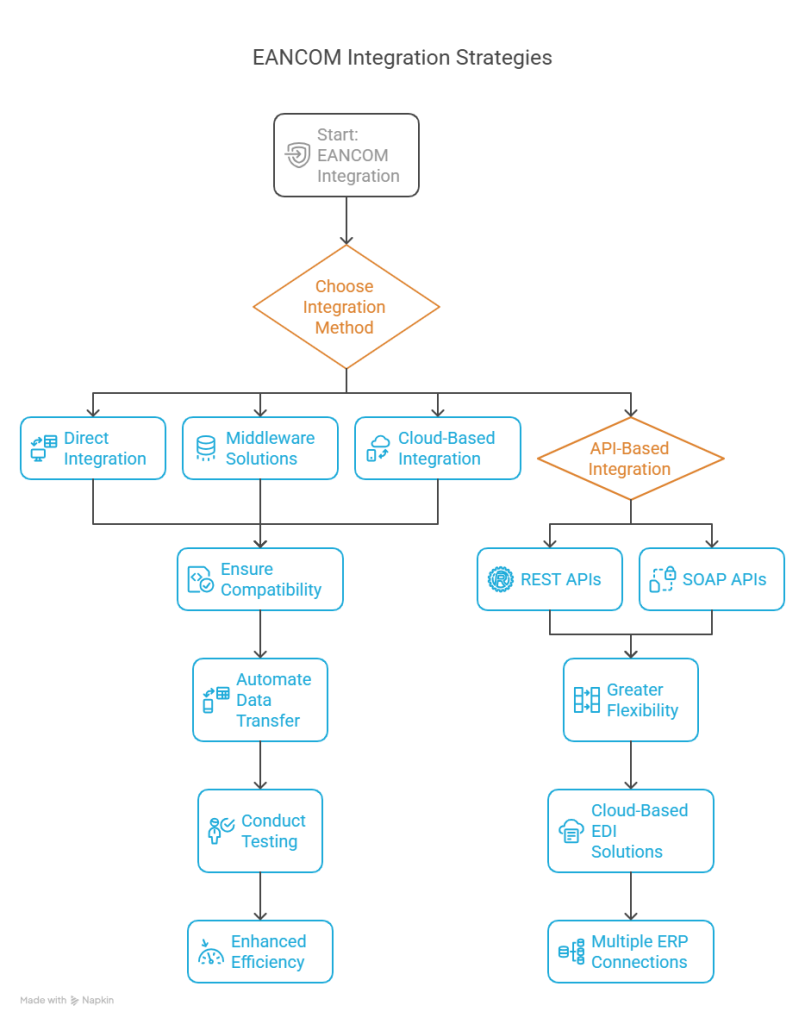
Successful EANCOM implementation depends heavily on effective integration with existing business systems. With billions of EANCOM messages exchanged annually among hundreds of thousands of users, organizations need robust integration strategies to maximize efficiency and accuracy.
ERP Integration Methods and Best Practices
ERP integration with EANCOM creates a seamless flow of data between systems. Organizations typically employ three primary methods:
- Direct Integration – Direct EDI integration connects directly to the ERP system without intermediaries
- Middleware Solutions – Third-party EDI providers manage data exchange handling all EDI translation, mapping, and routing, and help integrate the data directly to your ERP or other backend systems.
- Cloud-Based EDI Integration – Hosted and affordable solutions with built-in translation, mapping, and routing supporting EANCOM standards and connecting to your ERP and other backend systems to automate the data exchange.
For successful implementation, ensure ERP and EDI compatibility, automate data transfer processes and conduct thorough testing. This approach eliminates manual data entry, reduces errors, and enhances operational efficiency.
API-Based Integration Approaches
API integration augments traditional EANCOM exchanges through real-time communication capabilities. Most cloud applications utilize REST APIs as they’re more robust and easier to implement, whereas SOAP APIs provide additional security for regulated data transactions.
API-based integration offers greater flexibility than traditional EDI, enabling instant updates between systems rather than batch processing. This approach supports diverse data formats and structures, making integration with different systems considerably easier.
Cloud-Based EDI Solutions
Cloud-based EDI solutions eliminate the complexities of self-hosting while offering scalability and operational efficiency. These platforms provide fully managed EDI services that handle setup, licensing, updates, and upgrades as requirements evolve over time.
Furthermore, cloud providers offer substantial advantages with multiple ERP connections—some delivering more than 70 different ERP integrations—ensuring comprehensive data integration across business applications.
Advanced EANCOM Implementation Techniques
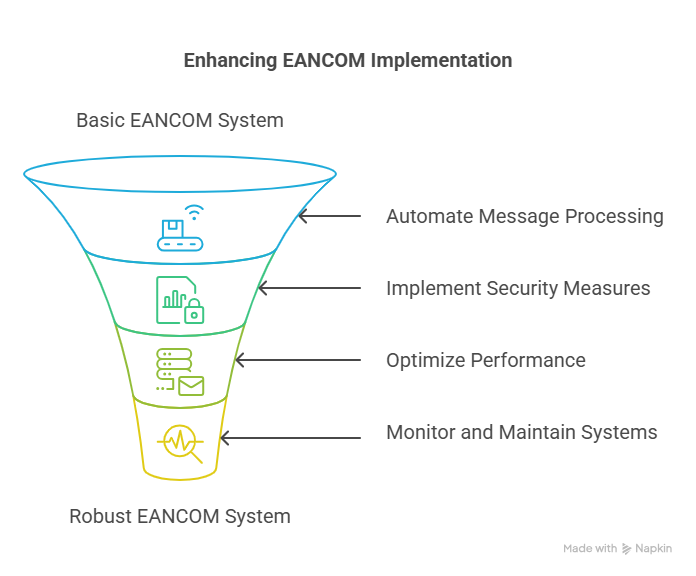
Beyond basic implementation, advancing your EANCOM EDI system requires sophisticated techniques to maximize efficiency and security. These advanced approaches transform standard EDI operations into robust, automated processes capable of handling complex business requirements.
Automating EANCOM Message Processing
Automation links the physical movement of goods with electronic data flows through scanning standard identification numbers on logistic units. Each unit receives a Serial Shipping Container Code (SSCC), enabling individual tracking throughout the supply chain. Through automation, the physical movement of items connects directly to information flows provided by EANCOM messages.
Typically, automated processes replace frequently transmitted free text with coded references, achieved through composite data elements in the FTX segment. This streamlines processing while maintaining data integrity across systems.
Implementing Security Measures for EANCOM Exchanges
Security implementation centers on the AUTACK message (Secure Authentication and Acknowledgement Message), which transports digital signatures and verification information between trading partners. This service message applies security to other EDIFACT structures through cryptographic mechanisms, ensuring:
- Data integrity throughout transmission
- Authentication of message origin
- Non-repudiation of origin for legal compliance
For optimal protection, encryption protocols like SSL or TLS secure data in transit, especially for sensitive information exchanges. Access control mechanisms with multi-factor authentication further fortify system security against unauthorized access.
Performance Optimization for High-Volume EANCOM Traffic
Handling billions of EANCOM messages annually requires performance tuning. Effective optimization includes structured data hierarchies where line numbers in the LIN segment follow sequential ordering starting at 1 for each new message, improving processing efficiency.
Next, implementing proper allowance and charge sequencing in the ALC segment group ensures correct calculation results across multiple processing levels.
Monitoring and Maintaining EANCOM Systems
Continuous system monitoring involves regular audits to identify vulnerabilities or anomalies. Real-time tracking helps detect security incidents promptly, ensuring rapid response to potential issues.
Eventually, collaboration with compliance experts familiar with EDI regulations ensures your systems remain aligned with current standards. As a result, your EANCOM implementation maintains operational excellence while adapting to evolving business requirements.
Conclusion
EANCOM standards have proven essential for streamlined electronic data interchange across global supply chains. Through structured message categories spanning master data, commercial transactions, logistics, and planning, EANCOM enables precise communication between trading partners.
This comprehensive guide demonstrated how EANCOM’s technical framework supports automated processing while maintaining data integrity and security. Businesses can choose between direct ERP integration, API-based approaches, or cloud solutions based on their specific needs. For organizations seeking reliable EDI implementation, Commport Integrated EDI Solution offers comprehensive support across all major EDI standards, including EANCOM.
The success of EANCOM lies in its standardized yet flexible approach:
- Consistent message structures reduce errors and improve efficiency
- Unique identification systems enable accurate tracking
- Security protocols protect sensitive business data
- Integration options accommodate various technical environments
As electronic data interchange continues growing beyond the projected $4.52 billion market size by 2030, mastering EANCOM implementation becomes crucial for businesses aiming to stay competitive. Therefore, understanding both fundamental concepts and advanced techniques helps organizations maximize their EDI investments while ensuring seamless communication with trading partners worldwide.
Commport EDI Solutions
Frequently Asked Questions
EANCOM is a subset of the UN/EDIFACT EDI standard, specifically designed for business applications. It provides a structured framework for electronic data interchange, focusing on essential message elements while omitting optional ones not relevant to GS1 users.
EANCOM messages are divided into four main categories: Master Data Messages (for product and party information), Commercial Transaction Messages (such as orders and invoices), Report and Planning Messages (for business intelligence), and Transport and Logistics Messages (for supply chain management).
Effective EANCOM implementation involves setting up the EDI environment, mapping business processes to EANCOM messages, establishing data validation and error handling protocols, and conducting thorough testing and certification procedures.
? Businesses can integrate EANCOM with their systems through direct ERP integration, API-based approaches, cloud-based solutions, or by addressing legacy system integration challenges. The choice depends on the organization’s specific needs and technical environment.
Security in EANCOM exchanges can be ensured by implementing the AUTACK message for secure authentication and acknowledgment, using encryption protocols like SSL or TLS for data in transit, and employing access control mechanisms with multi-factor authentication to prevent unauthorized access.

